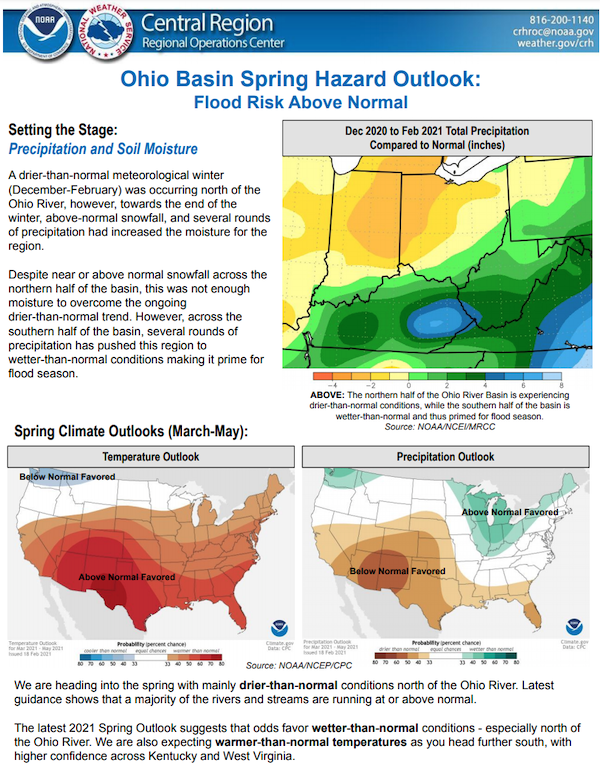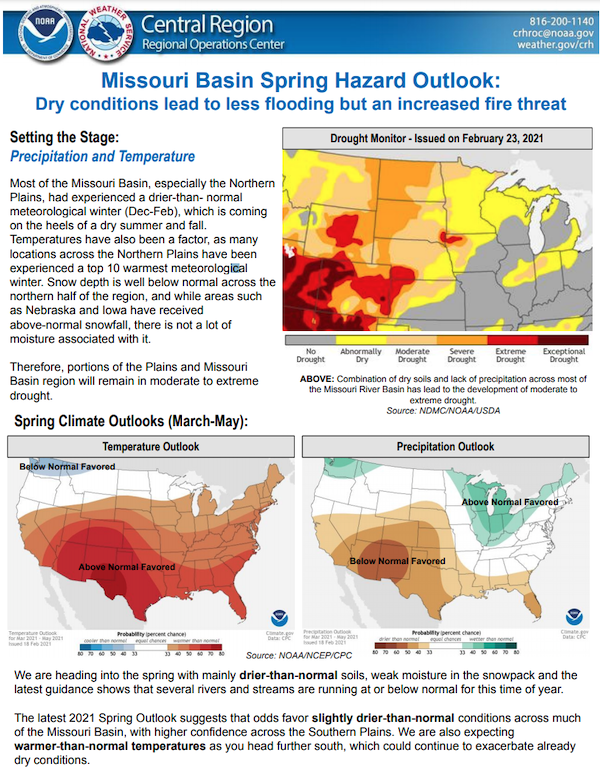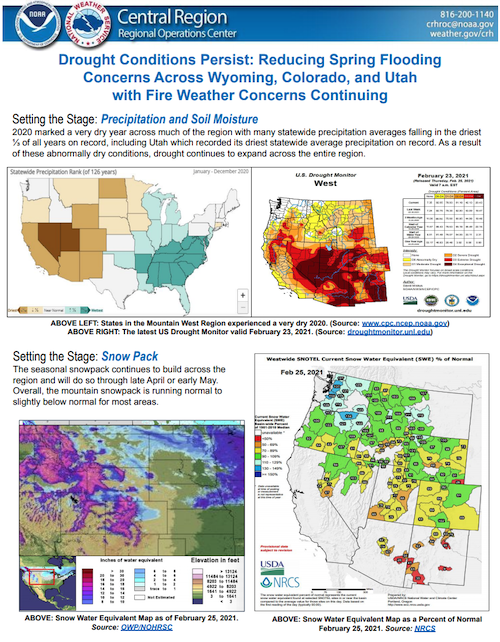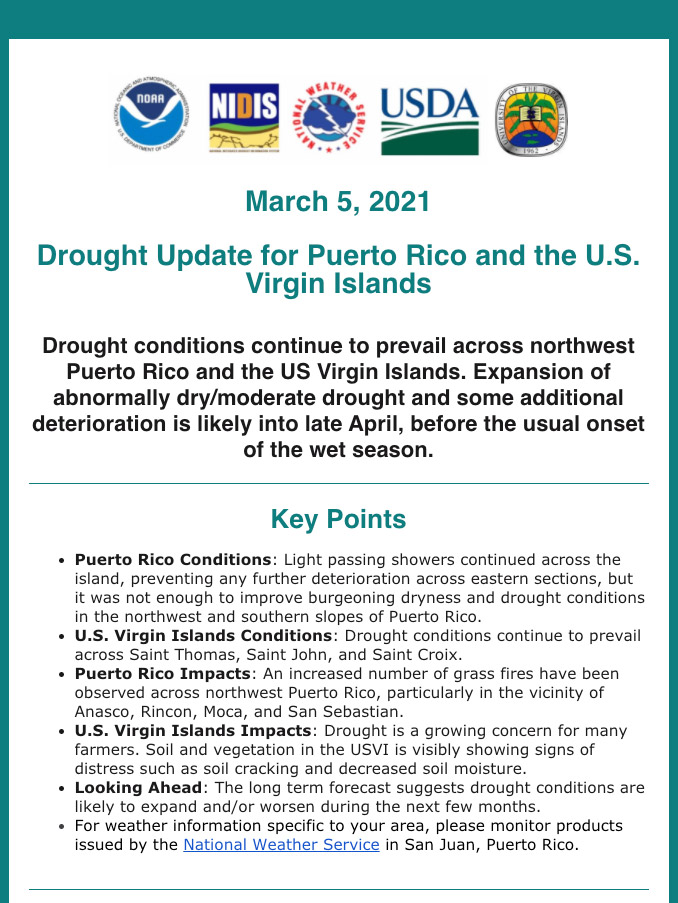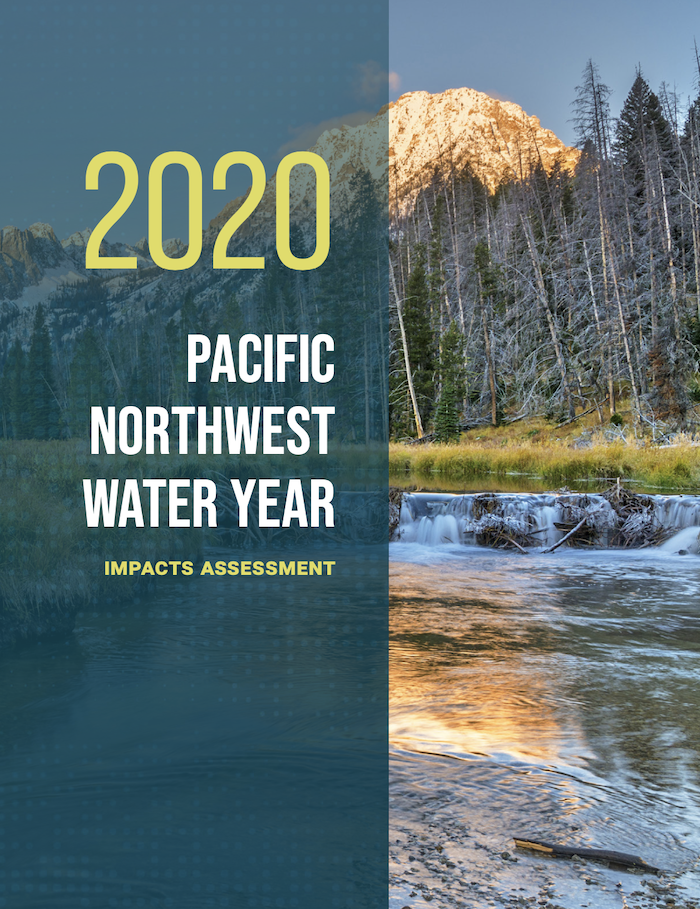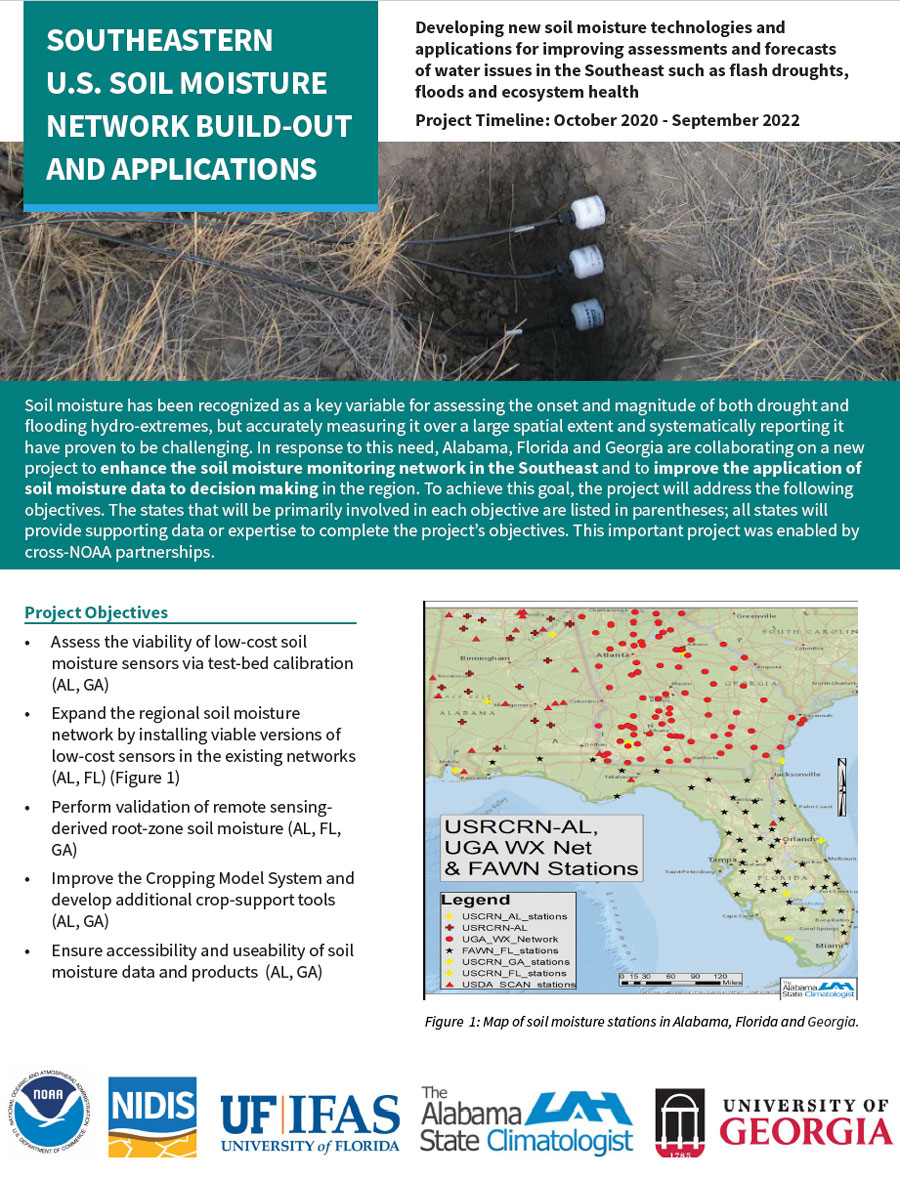Quarterly Climate Impacts and Outlook for Hawaii and the U.S. Pacific Islands Region for December 2020 – February 2021. Dated March 2021.
Across the central and eastern equatorial Pacific Ocean, sea-surface temperatures (SSTs) were below normal with La Niña conditions present and a La Niña Advisory still in effect as of the end of February.
Quarterly Climate Impacts and Outlook for Alaska and Northwestern Canada for December 2020 - February 2021; outlook for April - June 2021. Dated March 2021.
Winter started at the beginning of November with the early arrival of a record setting 40cm snowfall. Conditions remained snowy resulting in 66cm depth of snow on the ground at the airport at the end of February. Northwest Canada & Alaska was mostly drier than normal.
The National Weather Service developed 2021 Spring Hazard Outlooks in coordination with the National Centers for Environmental Information, National Integrated Drought Information System (NIDIS), U.S. Department of Agriculture, National Weather Service River Forecast Centers, and National Interagency Fire Centers' Geographic Area Coordination Centers. This outlook highlights the various Spring hazards that could occur and potential impacts across the Ohio River Valley.
The National Weather Service developed 2021 Spring Hazard Outlooks in coordination with the National Centers for Environmental Information, National Integrated Drought Information System (NIDIS), U.S. Department of Agriculture, National Weather Service River Forecast Centers, and National Interagency Fire Centers' Geographic Area Coordination Centers. This outlook highlights the various Spring hazards that could occur and potential impacts across the Upper Mississippi Valley and Great Lakes.
The National Weather Service developed 2021 Spring Hazard Outlooks in coordination with the National Centers for Environmental Information, National Integrated Drought Information System (NIDIS), U.S. Department of Agriculture, National Weather Service River Forecast Centers, and National Interagency Fire Centers' Geographic Area Coordination Centers. This outlook highlights the various Spring hazards that could occur and potential impacts across the Missouri River Basin.
The National Weather Service developed 2021 Spring Hazard Outlooks in coordination with the National Centers for Environmental Information, National Integrated Drought Information System (NIDIS), U.S. Department of Agriculture, National Weather Service River Forecast Centers, and National Interagency Fire Centers' Geographic Area Coordination Centers. This outlook highlights the various Spring hazards that could occur and potential impacts across the Mountain West.
This drought update is issued in partnership between the National Integrated Drought Information System (NIDIS), National Oceanic and Atmospheric Administration (NOAA) National Weather Service, and the U.S. Department of Agriculture (USDA), and the University of the Virgin Islands. The purpose of the update is to communicate a potential area of concern for drought expansion and/or development within Puerto Rico and the U.S. Virgin Islands based on recent conditions and the upcoming three month forecast.
The topic of “Flash Drought” is rapidly gaining attention within both the research and drought management communities. This literature review, which was created in preparation for the National Integrated Drought Information System Flash Drought Virtual Workshop, aims to synthesize the research to date and provide a basis for future research on the topic. Specifically, this review is focused on documenting the range of definitions of “flash drought” being proposed in the research community.
In Water Year 2020, most of Oregon experienced a significant drought with dominant impacts that included wildfires, agricultural and livestock losses, and limited outdoor recreation. Drought in Washington and Idaho was not as widespread or significant, with localized drought in a few basins in south-central Idaho and east of the Cascade Mountain crest in central Washington. Washington and Oregon also experienced major flood events in February; those impacts and others are highlighted as well.
Soil moisture has been recognized as a key variable for assessing the onset and magnitude of both drought and flooding hydro-extremes, but accurately measuring it over a large spatial extent and systematically reporting it have proven to be challenging. In response to this need and with support from NIDIS, the NOAA Office of Oceanic and Atmospheric Research's Weather Program Office funded a new project to enhance the soil moisture monitoring network in Alabama, Georgia, and Florida and to improve the application of soil moisture data to decision making in the region.




